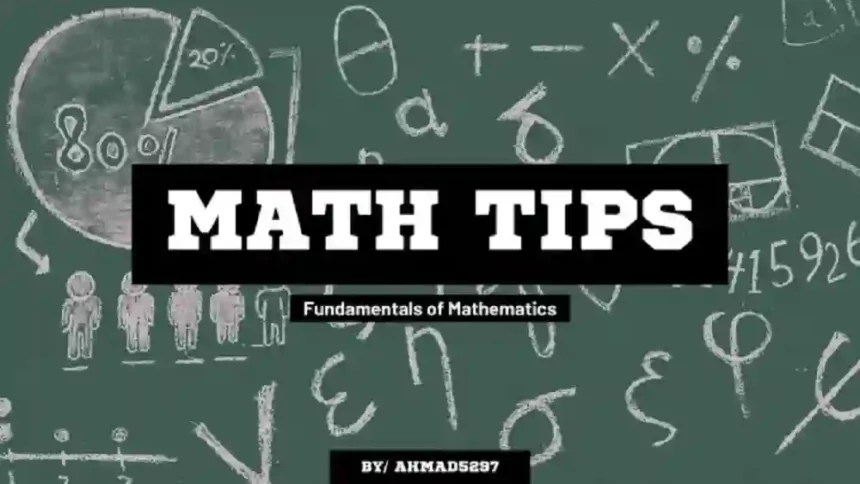In the vast landscape of mathematics, becoming a problem-solving whiz is more than a skill—it’s an art that requires a combination of strategies, mindset, and a deep understanding of mathematical principles. This article, “Problem-Solving Whiz: Navigating Mathematical Challenges,” serves as a comprehensive guide for individuals aspiring to excel in the art of mathematical problem-solving. Whether you’re tackling basic arithmetic or delving into the complexities of advanced calculus, the strategies outlined here will empower you to navigate mathematical challenges with confidence, precision, and a touch of artistry.
The Art of Navigating Mathematical Challenges:
Mathematics, often seen as a labyrinth of numbers and symbols, can be navigated with artistry. Becoming a problem-solving whiz involves approaching each mathematical challenge as a canvas waiting to be adorned with solutions. It’s about mastering the art of unraveling complexity and finding elegant paths through the mathematical landscape.
Recognizing the Diversity of Mathematical Challenges:
Mathematics presents a diverse array of challenges, ranging from the simplicity of basic arithmetic to the intricacies of abstract algebra. Recognizing the diversity of these challenges is paramount for tailoring problem-solving strategies to the specific nature of each problem. A problem-solving whiz embraces the rich tapestry of mathematical diversity.
Decoding Complexity: Strategies for Illuminating the Path:
Complex mathematical problems often appear as puzzles waiting to be decoded. Strategies for navigating complexity involve breaking down problems into manageable components, understanding their relationships, and illuminating the path through systematic decoding. A problem-solving whiz approaches complex problems with an artistic eye for unraveling layers of intricacy.
Visualization: Painting Mental Images for Insight:
Visualization becomes the brushstroke that adds insight to problem-solving artistry. Creating mental images, sketching diagrams, and employing visual aids enhance the understanding of mathematical concepts. Visualization not only accelerates the learning process but also provides an artistic and intuitive dimension to navigating through mathematical challenges.
Building a Whiz’s Toolkit: Versatility in Approaches:
Navigating mathematical challenges requires a versatile toolkit of problem-solving approaches. From systematic trial and error to employing advanced techniques like differentiation, building a diverse set of tools ensures adaptability to various challenges. A problem-solving whiz selects the right brush for each mathematical canvas.
Elegance in Simplicity: Mastering the Art of Solutions:
Elegance in simplicity becomes the signature of a problem-solving whiz. Striving for solutions that are not only accurate but also elegantly simple showcases a mastery that transcends mere computation. A whiz avoids unnecessary complexities, aiming for solutions that add a touch of artistic finesse to the mathematical canvas
Pattern Recognition: Unveiling Symmetry in Complexity:
Pattern recognition is the artist’s eye that unveils symmetry within complexity. Training oneself to identify recurring sequences, relationships, and hidden structures within problems adds a layer of artistic intuition to problem-solving. Navigating mathematical challenges becomes an artistic composition where patterns are recognized and harmonized.
Persistence: The Perseverance of Artistic Mastery:
Persistence is the enduring stroke that defines artistic mastery in problem-solving. Viewing challenges as opportunities for artistic growth, learning from mistakes, and persistently refining strategies characterize the mindset of a problem-solving whiz. Each stroke contributes to the masterpiece of mathematical proficiency.
Effective Time Management: Orchestrating Artistry with Precision:
Effective time management becomes the conductor’s baton, orchestrating artistic problem-solving with precision. Allocating time judiciously based on the complexity of each problem ensures efficiency without compromising accuracy. Time management becomes the strategic rhythm that guides a problem-solving whiz through mathematical challenges.
Reflective Practice: The Artistic Critique for Continuous Improvement:
Reflective practice is the artistic critique that fosters continuous improvement in problem-solving artistry. After solving a problem, taking the time to reflect on the approach, identifying strengths, and considering alternative strategies enriches problem-solving skills. A problem-solving whiz sees each solution as an opportunity for artistic refinement.
Collaboration: Creating Artistic Symphonies with Peers:
Collaboration becomes the ensemble where artistic problem-solving symphonies are created. Engaging in collaborative problem-solving sessions, sharing artistic insights with peers, and learning from diverse perspectives enrich the artistic experience. Collaboration not only amplifies the artistic brilliance but also fosters a sense of community within the mathematical realm.
Celebrating Artistic Triumphs: A Gallery of Proficiency:
Every solved mathematical problem is a stroke in the gallery of artistic triumphs for a problem-solving whiz. Acknowledging and celebrating these triumphs, regardless of scale, is a testament to artistic proficiency. Celebrating artistic achievements fuels motivation for further exploration and mastery.
Conclusion:
“Problem-Solving Whiz: Navigating Mathematical Challenges” encapsulates the essence of mastering the art of mathematical problem-solving. By recognizing the diversity of challenges, decoding complexity with artistic strategies, and infusing elegance into solutions, individuals can navigate mathematical challenges with the precision and finesse of a true problem-solving artist. Remember, the journey of becoming a problem-solving whiz is not just about finding answers; it’s about the joy of artistic discovery, the satisfaction of unraveling patterns, and the fulfillment of mastering the artistry within the realm of mathematics. As you embark on your artistic journey of problem-solving, let this guide be your palette, helping you navigate the mathematical canvas with the creativity, confidence, and proficiency of a true problem-solving maestro.













